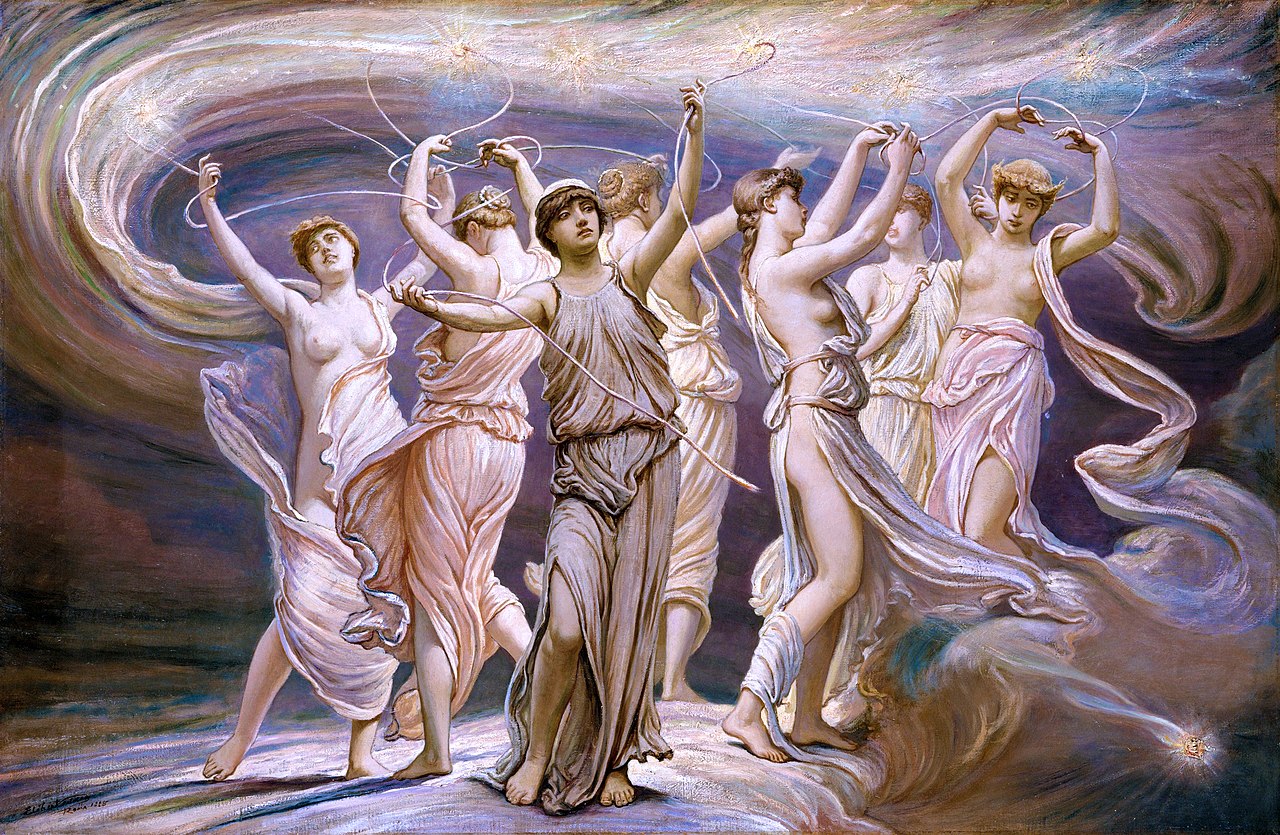<Back to Index>
- Pleiad (Πλειάς)
Taygete (Ταϋγέτη),
Mythic
PAGE SPONSOR

In Greek mythology, Taygete (Greek Ταϋγέτη) was a nymph, one of the Pleiades according to the Bibliotheca (3.10.1) and a companion of Artemis, in her archaic role as potnia theron, "Mistress of the animals". Mount Taygetos in Laconia, dedicated to the goddess, was her haunt.
As he mastered each of the local nymphs one by one, Olympic Zeus pursued Taygete, who invoked her protectress Artemis. The goddess turned Taygete into a doe, any distinction between the Titaness in her human form and in her doe form is blurred: the nymph who hunted the doe in the company of Artemis is the doe herself. As Pindar conceived the myth - element in his third Olympian Ode, "the doe with the golden horns, which once Taygete had inscribed as a sacred dedication to Artemis Orthosia", ("right - minded" Artemis) was the very Ceryneian Hind that Heracles later pursued. For the poet, the transformation was incomplete, and the doe - form had become an offering. Pindar, who was a very knowledgeable mythographer, hints that the mythic doe, even when slain and offered to Artemis, also continues to exist, to be hunted once again (though not killed) by Heracles at a later time. Karl Kerenyi points out (The Heroes of the Greeks) "It is not easy to differentiate between the divine beast, the heroine and the goddess".
According to Pausanias, Taygete conceived Lacedaemon, the mythical founder of Sparta, through Zeus, and Eurotas. Pausanias noted, at Amyclae, that the rape of Taygete was represented on the throne.
Later mythographers have misconceived Taygete's transformation as a punishment from Artemis, for her loss of virginity in the rape.